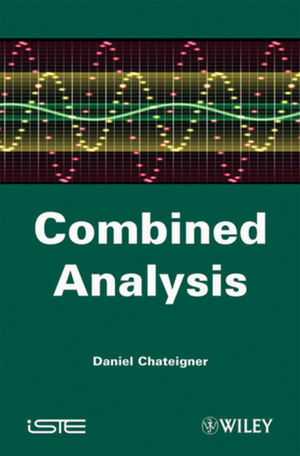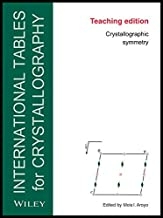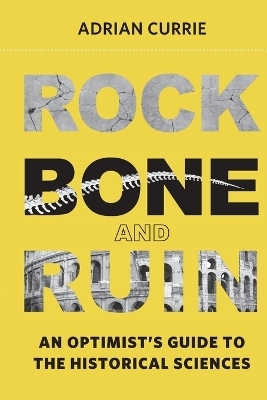
Combined Analysis
ISTE Ltd and John Wiley & Sons Inc (Verlag)
978-1-84821-198-8 (ISBN)
- Titel z.Zt. nicht lieferbar
- Versandkostenfrei innerhalb Deutschlands
- Auch auf Rechnung
- Verfügbarkeit in der Filiale vor Ort prüfen
- Artikel merken
This book introduces and details the key facets of Combined Analysis—an x-ray and/or neutron scattering methodology which combines structural, textural, stress, microstructural, phase, layer, or other relevant variable or property analyses in a single approach. The author starts with basic theories related to diffraction by polycrystals and some of the most common combined analysis instrumental set-ups are detailed. Powder diffraction data treatment is introduced and in particular, the Rietveld analysis is discussed. The book also addresses automatic phase indexing—a necessary step to solve a structure ab initio. Since its effect prevails on real samples where textures are often stabilized, quantitative texture analysis is also detailed. Also discussed are microstructures of powder diffraction profiles; quantitative phase analysis from the Rietveld analysis; residual stress analysis for isotropic and anisotropic materials; specular x-ray reflectivity, and the various associated models. Finally, the book introduces the combined analysis concept, showing how it is superior to the view presented when we look at only one part of the analyses.
This book shows that the existence of texture in a specimen can be envisaged as a way to decouple ordinarily strongly correlated parameters, as measured for instance in powder diagrams, and to examine and detail deeper material characterizations in a single methodology.
Daniel Chateigner is Professor at the University of Caen Lower Normandy in France.
Introduction xiii
Acknowledgements xvii
Chapter 1. Some Basic Notions About Powder Diffraction 1
1.1. Crystallite, grain, polycrystal and powder 1
1.2. Bragg’s law and harmonic reflections 2
1.3. Geometric conditions of diffraction, Ewald sphere 4
1.4. Imperfect powders 5
1.5. Main diffraction line profile components 6
1.6. Peak profile parameters 11
1.7. Modeling of the diffraction peaks 11
1.8. Experimental geometry 22
1.9. Intensity calibration (flat-field) 26
1.10. Standard samples 32
1.11. Probed thickness (penetration depth) 36
Chapter 2. Structure Refinement by Diffraction Profile Adjustment (Rietveld Method) 41
2.1. Principle of the Rietveld method 41
2.2. Rietveld-based codes 43
2.3. Parameter modeling 44
2.4. Crystal structure databases 71
2.5. Reliability factors in profile refinements 71
2.6. Parameter exactness 75
2.7. The Le Bail method 75
2.8. Refinement procedures 76
2.9. Refinement strategy 81
2.10. Structural determination by diffraction 82
Chapter 3. Automatic Indexing of Powder Diagrams 91
3.1. Principle 91
3.2. Dichotomy approach 92
3.3. Criterions for quality 93
Chapter 4. Quantitative Texture Analysis 95
4.1. Classic texture analysis 95
4.2. Orientation distribution (OD) or orientation distribution function (ODF)131
4.3. Distribution density and normalization 140
4.4. Direct and normalized pole figures 140
4.5. Reduced pole figures 143
4.6. Fundamental equation of quantitative texture analysis 143
4.7. Resolution of the fundamental equation 150
4.8. OD refinement reliability estimators 161
4.9. Inverse pole figures 168
4.10. Texture strength factors 170
4.11. Texture programs 173
4.12. Limits of the classic texture analysis 176
4.13. Magnetic quantitative texture analysis (MQTA)178
4.14. Reciprocal space mapping (RSM)189
Chapter 5. Quantitative Microstructure Analysis 191
5.1. Introduction 191
5.2. Microstructure modeling (classic) 192
5.3. Bertaut-Warren-Averbach approach (Fourier analysis) 197
5.4. Anisotropic broadening: the Popa approach 204
5.5. Stacking and twin faults 212
5.6. Dislocations 214
5.7. Crystallite size distributions 217
5.8. Rietveld approach 219
Chapter 6. Quantitative Phase Analysis 221
6.1. Standardized experiments 221
6.2. Polycrystalline samples 221
6.3. Amorphous-crystalline aggregates 223
6.4. Detection Limit 225
Chapter 7. Residual Strain-Stress Analysis 227
7.1. Strain definitions 227
7.2. ?Ï33 strain determination 229
7.3. Complete strain tensor determination 230
7.4. Textured samples 232
Chapter 8. X-Ray Reflectivity 235
8.1. Introduction 235
8.2. X-rays and neutrons refractive index 238
8.3. The critical angle of reflection 240
8.4. Fresnel formalism (specular reflectivity) 241
8.5. Surface roughness 246
8.6. Matrix formalism (specular reflectivity) 250
8.7. Born approximation 251
8.8. Electron density profile 251
8.9. Multilayer reflectivity curves 252
8.10. Instrumental corrections 253
Chapter 9. Combined Structure-Texture-Microstructure-Stress-Phase Reflectivity Analysis 257
9.1. Initial queries 257
9.2. Implementation 261
9.3. Experimental set-up 264
9.4. Instrument calibration 264
9.5. Refinement strategy 269
9.6. Examples 272
Chapter 10. Macroscopic Anisotropic Properties 363
10.1. Aniso- and isotropic samples and properties 363
10.2. Macroscopic/microscopic properties 364
Bibliography 441
Glossary 483
Abbreviations 487
Mathematical Operators 489
Index 491
| Verlagsort | London |
|---|---|
| Sprache | englisch |
| Maße | 160 x 241 mm |
| Gewicht | 894 g |
| Themenwelt | Mathematik / Informatik ► Mathematik |
| Naturwissenschaften ► Geowissenschaften ► Mineralogie / Paläontologie | |
| Technik ► Elektrotechnik / Energietechnik | |
| Schlagworte | Kombinatorik • Sensor |
| ISBN-10 | 1-84821-198-8 / 1848211988 |
| ISBN-13 | 978-1-84821-198-8 / 9781848211988 |
| Zustand | Neuware |
| Haben Sie eine Frage zum Produkt? |
aus dem Bereich


